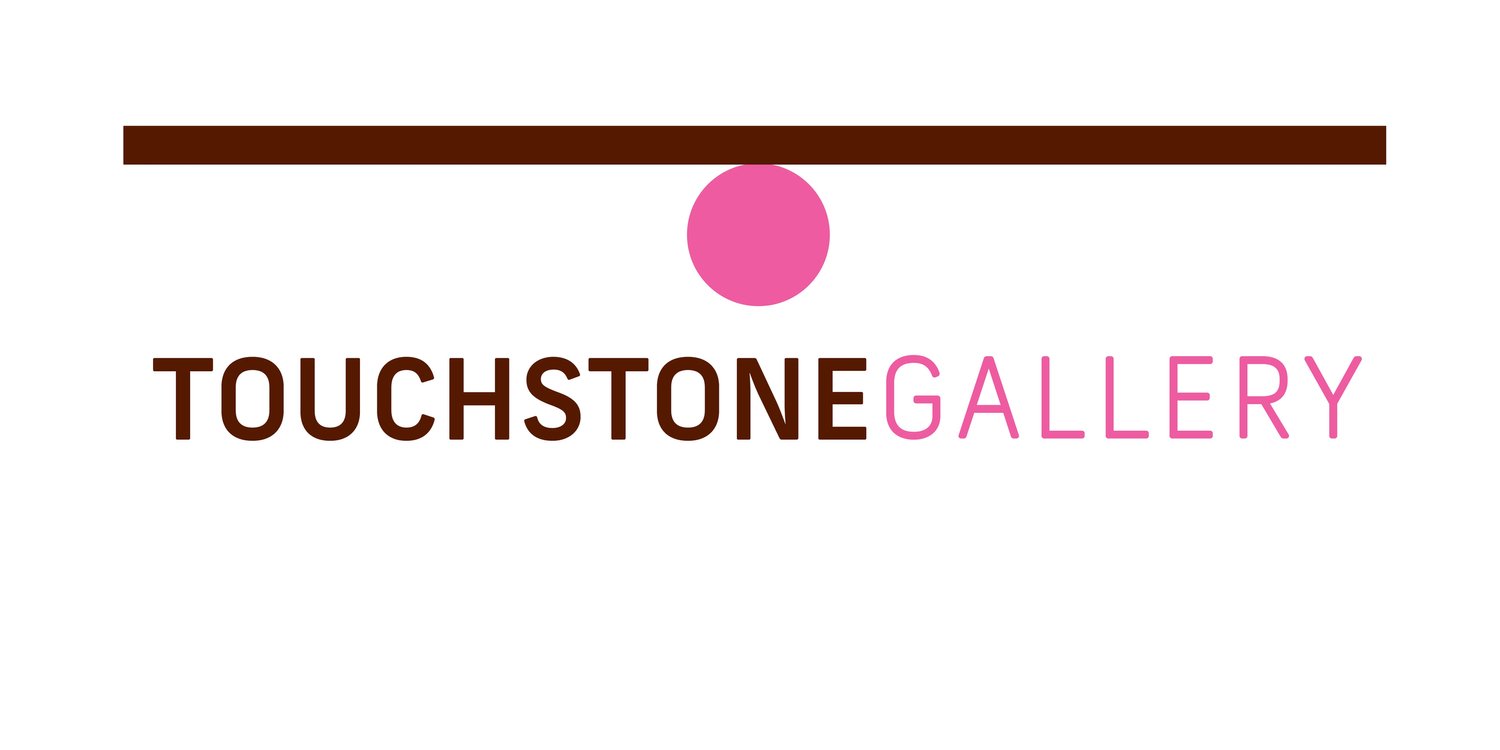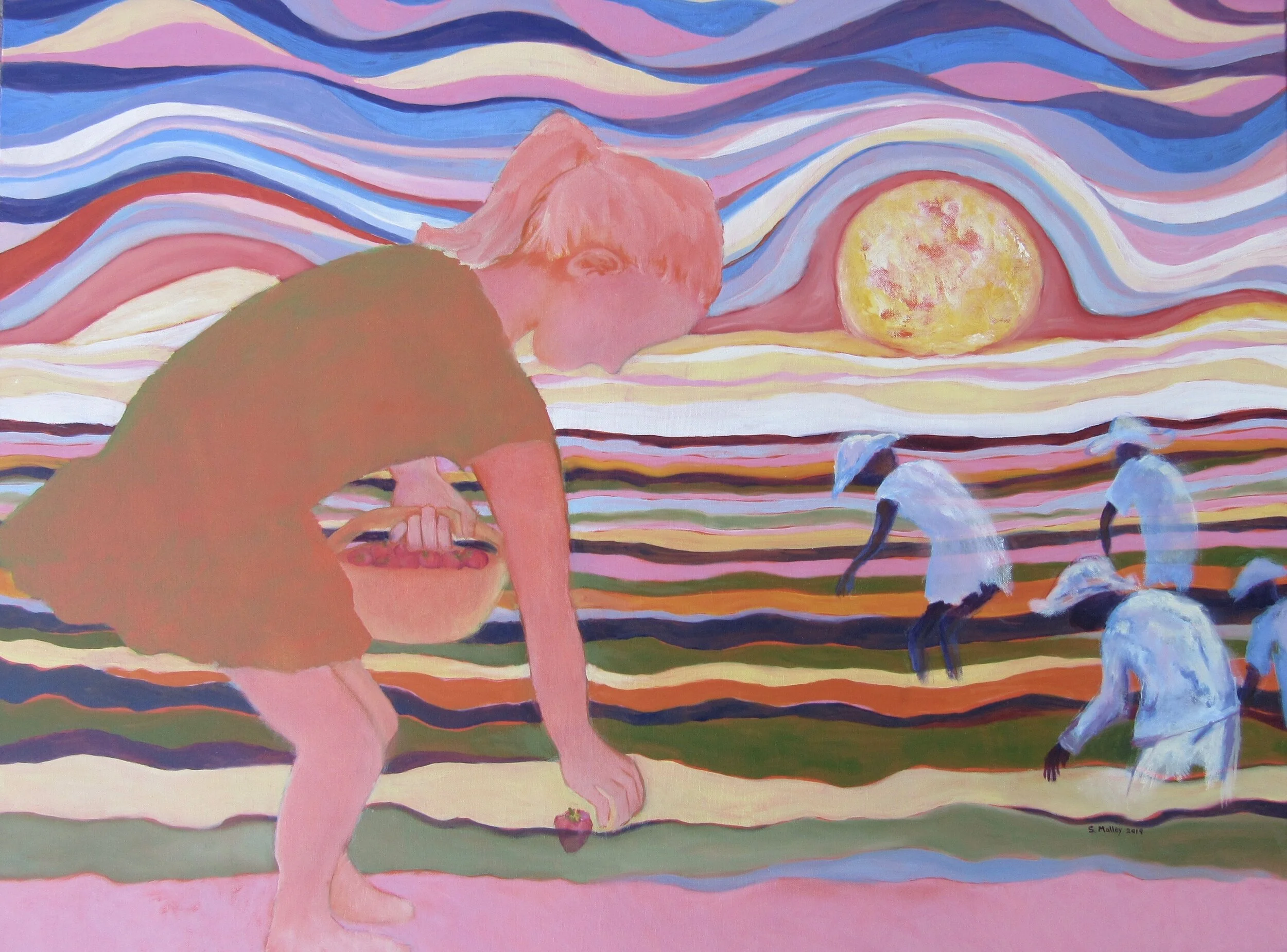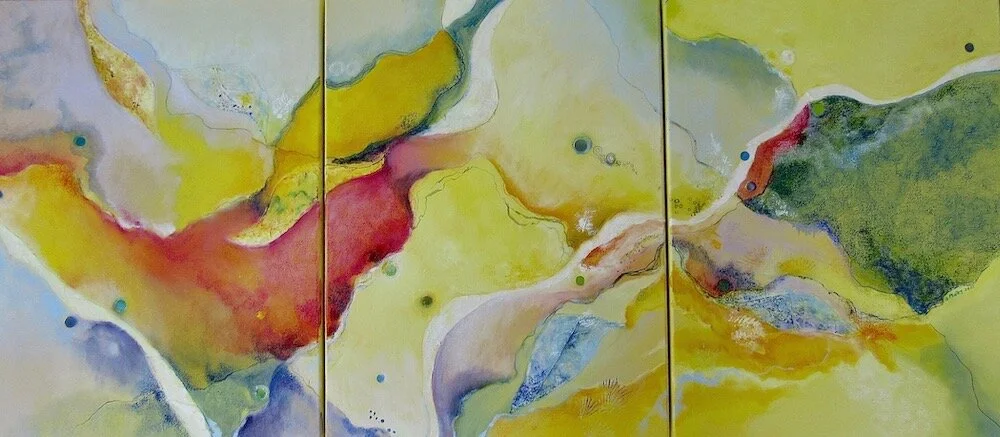Red Lips II, 30” x 40”, Oil
Sharon Malley’s work is divided along stylistic lines: half of it is figurative, half abstract. Sharon explains this division by subject—the concerns she is addressing in each half. These include racial inequality in the figurative work, and the environment and climate change in the abstract.
The first concern goes back to Sharon’s childhood. Growing up on her grandparents’ farm on the Eastern Shore of Maryland in the 1950s and early 1960s, as a young White girl she played with the children of African American tenant farmers and the migrant workers who came every summer to help harvest the crop. This was during the Jim Crow era, and yet she and her playmates were unaware of their differences and the racial divisions that society imposed. The second concern also goes back to the Eastern Shore, where she spent her early days immersed in nature and now directs her energies to advocating for climate legislation.
Wind Took Care of the Earth, 32” x 38”, Oil
Malley’s work reflects these concerns in different ways. Many of the figurative paintings depict children of different races together, sharing the pleasures of picking berries, jumping rope, or playing games. These paintings have a dreamlike, almost whimsical quality. Sharon told me that in their innocence, she and her friends were able to examine their differences—say, the various textures of their hair – with complete abandonment. But then there were times when she came up against the customs and unwritten rules that adults used to place limits on those friendships.
Malley expresses her concerns about climate change more abstractly. Rather than painting landscapes, she creates many-layered works that evoke the complex interdependencies of the environment which, she says, she experiences with a sense of spirituality.
Art has been part of Sharon Malley’s life from childhood. She began painting at an early age but did not develop as a solo artist for many years. In the interim, she combined her artistic talents and interests with education and other professional pursuits. She earned a BA in Visual Art Education and an MA and PhD in Education, and worked as a therapist, teacher, educator, and non-profit manager in the field of intellectual disabilities.
Great Waters of Forgetting, 24” x 54” x 1.5”, Oil, oil crayon, ink, collage
Throughout her career, Malley has found various ways to incorporate the arts in her work. She subsequently led the national agenda on arts education and special education at the Kennedy Center. Leaving that position to pursue her own art-making path, she found space—and a community--at the Columbia Pike Artist Studios in Arlington, where she met Paula Lantz and then decided to join Touchstone. We welcome her and look forward to seeing more of her work—both figurative and abstract.
—Sonya Michel



